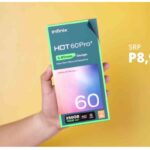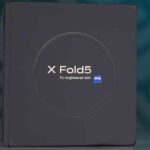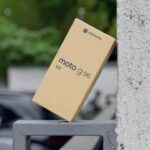The Samsung Galaxy Z Flip 7 has arrived, and it’s clear Samsung is doubling down on refining its clamshell foldable to compete in an increasingly crowded market. With a larger cover screen, enhanced durability, and a bigger battery, the Z Flip 7 aims to address past shortcomings while maintaining its stylish edge. After spending time with the device, here’s my full review of Samsung’s latest flip phone, launched on July 9, 2025, and available from July 25.
Design and Build: Slimmer, Sturdier, and Stunning
The Galaxy Z Flip 7 feels like a love letter to foldable fans who crave a compact yet premium device. At 13.7mm when folded and 188g, it’s Samsung’s slimmest and lightest flip phone yet, shaving off 1.2mm when folded and 0.4mm when unfolded compared to the Z Flip 6. The Armor Aluminium frame and Gorilla Glass Victus 2 give it a robust feel, and the new Armour Flex hinge is noticeably tighter, reducing wobble and enhancing durability. The IP48 rating, consistent with its predecessor, offers water resistance up to 1.5m for 30 minutes, with improved circuitry waterproofing due to slimmer bezels.

The phone comes in Blue Shadow, Jet Black, Coral Red, and a Samsung-exclusive Mint color, adding a vibrant flair. The design retains the sleek, flat-edged aesthetic but introduces slightly less rounded corners, giving it a modern, refined look. The crease on the 6.9-inch internal display is less noticeable than before, though still visible at certain angles—a small but welcome improvement. However, the IP48 rating means dust particles smaller than 1mm can still pose a risk, so beach trips require caution.
Display: Bigger and Better
The Z Flip 7’s standout feature is its 4.1-inch Super AMOLED FlexWindow cover screen, a significant jump from the 3.4-inch display on the Z Flip 6. With a resolution of 948 x 1048 and a 120Hz refresh rate (up from 60Hz), it’s now a true competitor to the Motorola Razr Ultra’s full-screen cover display. The screen wraps around the dual cameras, maximizing usable space with slim 1.25mm bezels, making it feel premium and futuristic.
The internal 6.9-inch Dynamic AMOLED 2X display (1080 x 2520) is slightly larger than the Z Flip 6’s 6.7-inch panel, offering vibrant colors, wide viewing angles, and a peak brightness of 2,600 nits. The LTPO panel supports a 1-120Hz adaptive refresh rate for smooth scrolling and better power efficiency. Rumors of a PHOLED display didn’t fully materialize, but the inclusion of a Color Filter on Encapsulation (CoE) panel reduces power consumption, contributing to improved battery life.

The cover screen’s functionality is enhanced with One UI 8’s Now Bar, which displays real-time app activity, notifications, and widgets like timers and Uber updates. Gemini Live integration allows hands-free tasks such as voice searches, reminders, and even camera-based AI advice. However, a major drawback persists: full app support on the cover screen still requires Samsung’s Good Lock app, unlike the Motorola Razr’s seamless app experience. This limitation feels outdated given the larger, more capable display.
Performance: Exynos Takes the Stage
For the first time, the Z Flip 7 uses Samsung’s Exynos 2500 chipset instead of a Qualcomm Snapdragon, paired with 12GB of RAM and storage options of 256GB or 512GB (no 1TB variant). The 3nm processor delivers solid performance for everyday tasks and gaming, with improved heat management thanks to a larger vapor chamber cooling system. However, the Exynos 2500 may not match the Snapdragon 8 Elite’s raw power, found in the Galaxy Z Fold 7 and S25 series, which could disappoint performance enthusiasts.
Running One UI 8 on Android 16, the Z Flip 7 feels snappy and polished. Galaxy AI features, such as AI Video Summarization and enhanced camera modes, integrate seamlessly. DeX support is a game-changer, transforming the phone into a lightweight desktop setup when connected to an external display, mouse, and keyboard—a first for the Flip series. This makes the Z Flip 7 surprisingly versatile for productivity, a feature previously exclusive to Fold models.
Camera: Familiar but Functional
The camera setup remains unchanged from the Z Flip 6: a 50MP f/1.8 main camera, a 12MP f/2.2 ultra-wide (123-degree FOV), and a 10MP f/2.2 front-facing camera. While the lack of a telephoto lens or significant hardware upgrades is disappointing compared to competitors like the Oppo Find N3 Flip, the Z Flip 7 compensates with software enhancements. Enhanced Nightography improves low-light performance, and new Flex Mode features like auto-zoom and a palm-activated countdown timer make selfies and vlogs more intuitive. Dual Preview lets both photographer and subject see the composition on the cover screen.
Image quality is solid, with vibrant colors and good dynamic range, though it doesn’t quite match the Galaxy S25 series’ capabilities. The hybrid 2x zoom and 10-bit HDR support add versatility, but photography enthusiasts may find the lack of hardware innovation limiting.
Battery Life: A Welcome Boost
The Z Flip 7’s 4,300mAh battery is a significant upgrade from the 4,000mAh cell in the Z Flip 6, bringing it closer to the Galaxy Z Fold 7’s capacity. Samsung claims up to 31 hours of video playback, and real-world use suggests noticeable improvements in longevity, easily lasting a full day with moderate use. The Exynos 2500’s efficiency and the power-saving CoE display contribute to this gain. However, charging speeds remain stagnant at 25W wired and 15W wireless, lagging







https://the.hosting/cs/help/jak-odinstalovat-firefox-z-poitae-v-operanim-systemu-ubuntu
https://the.hosting/no/windows-vps-for-forex-trading
uk voip mobile number